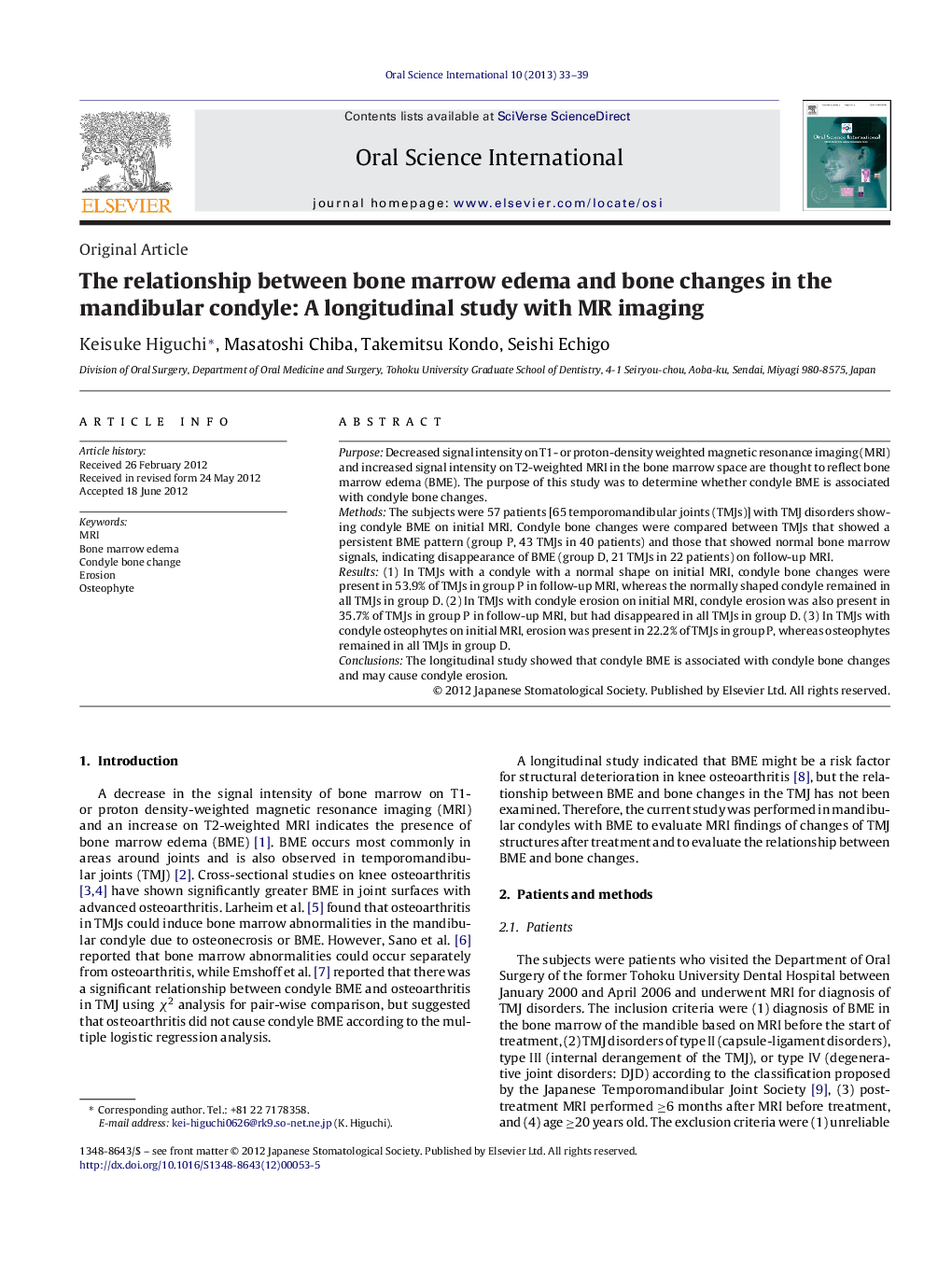| کد مقاله | کد نشریه | سال انتشار | مقاله انگلیسی | نسخه تمام متن |
|---|---|---|---|---|
| 2777219 | 1152689 | 2013 | 7 صفحه PDF | دانلود رایگان |

PurposeDecreased signal intensity on T1- or proton-density weighted magnetic resonance imaging (MRI) and increased signal intensity on T2-weighted MRI in the bone marrow space are thought to reflect bone marrow edema (BME). The purpose of this study was to determine whether condyle BME is associated with condyle bone changes.MethodsThe subjects were 57 patients [65 temporomandibular joints (TMJs)] with TMJ disorders showing condyle BME on initial MRI. Condyle bone changes were compared between TMJs that showed a persistent BME pattern (group P, 43 TMJs in 40 patients) and those that showed normal bone marrow signals, indicating disappearance of BME (group D, 21 TMJs in 22 patients) on follow-up MRI.Results(1) In TMJs with a condyle with a normal shape on initial MRI, condyle bone changes were present in 53.9% of TMJs in group P in follow-up MRI, whereas the normally shaped condyle remained in all TMJs in group D. (2) In TMJs with condyle erosion on initial MRI, condyle erosion was also present in 35.7% of TMJs in group P in follow-up MRI, but had disappeared in all TMJs in group D. (3) In TMJs with condyle osteophytes on initial MRI, erosion was present in 22.2% of TMJs in group P, whereas osteophytes remained in all TMJs in group D.ConclusionsThe longitudinal study showed that condyle BME is associated with condyle bone changes and may cause condyle erosion.
▸ Temporomandibular joints (TMJs) showing condyle bone marrow edema (BME) on MRI were followed up. ▸ In TMJs with normal shaped condyle and BME before treatment, bone changes could occur when BME persisted after treatment. ▸ In TMJs with condyle erosion and BME before treatment, erosion disappeared when BME disappeared after treatment. ▸ In TMJs with condyle osteophytes and BME before treatment, osteophytes remained when BME disappeared after treatment. ▸ The longitudinal study showed condyle BME is associated with bone changes and may cause erosion.
Journal: Oral Science International - Volume 10, Issue 1, January 2013, Pages 33–39